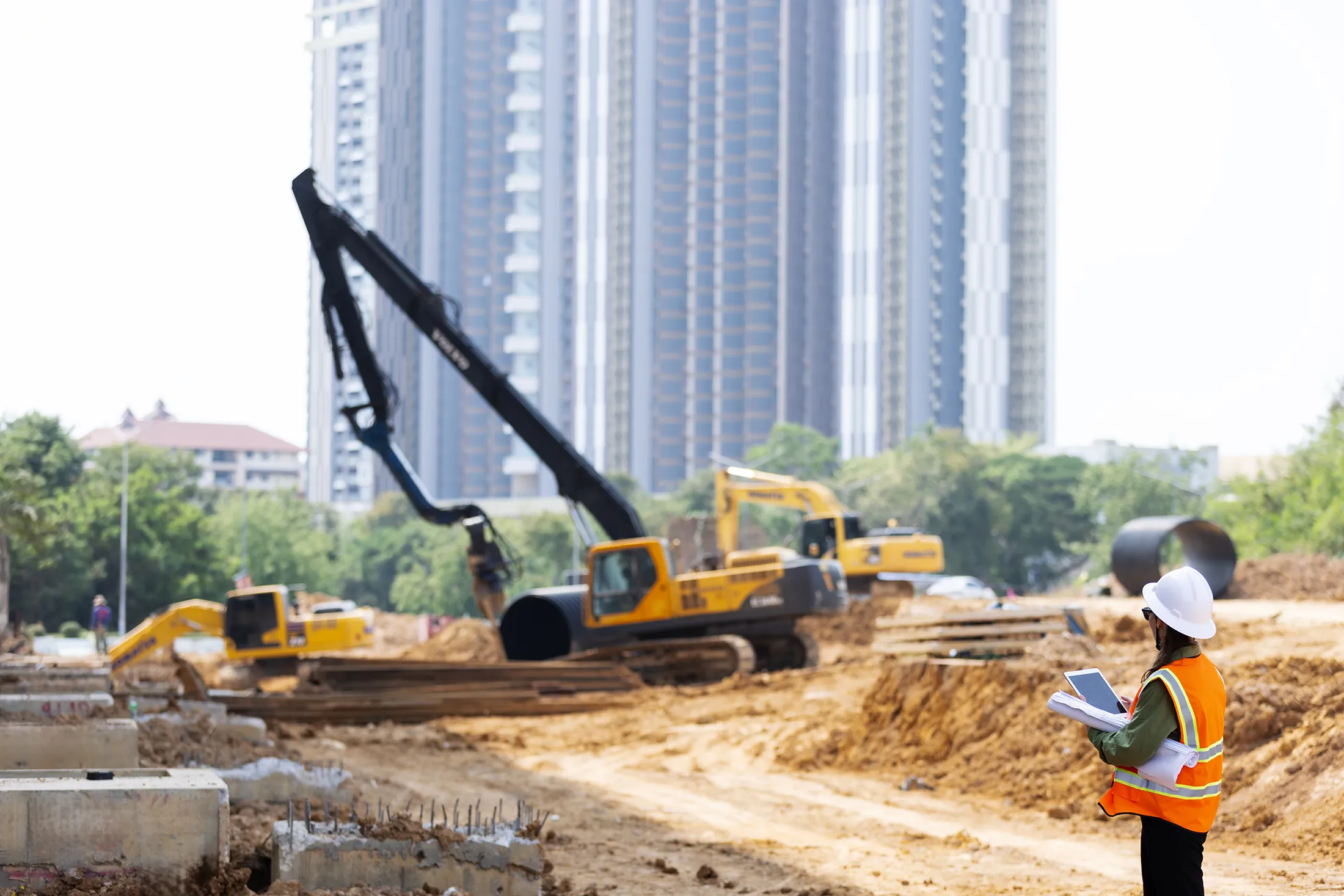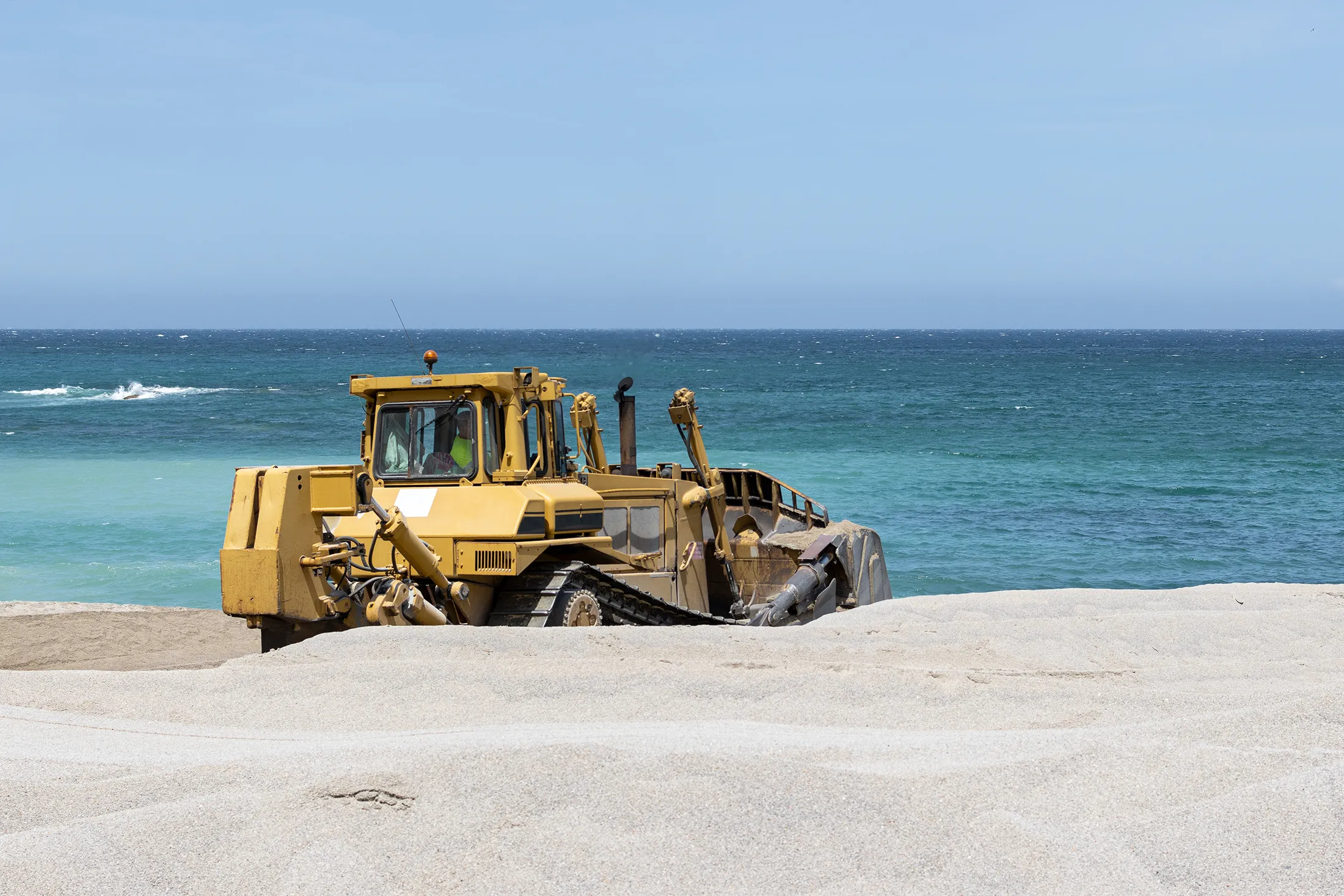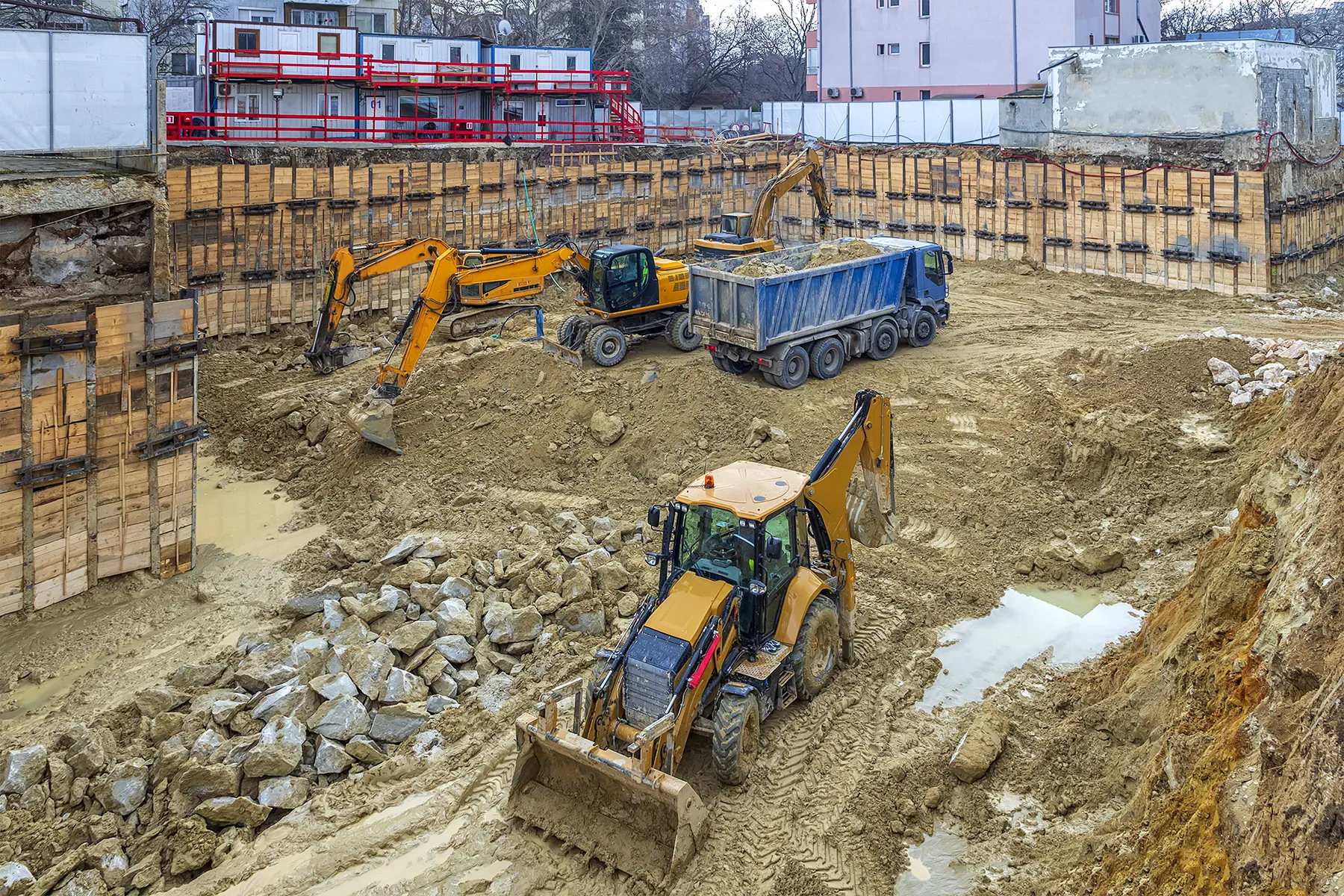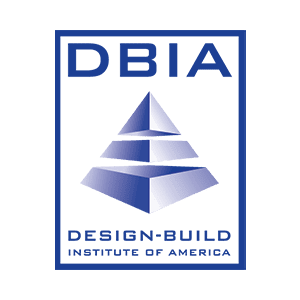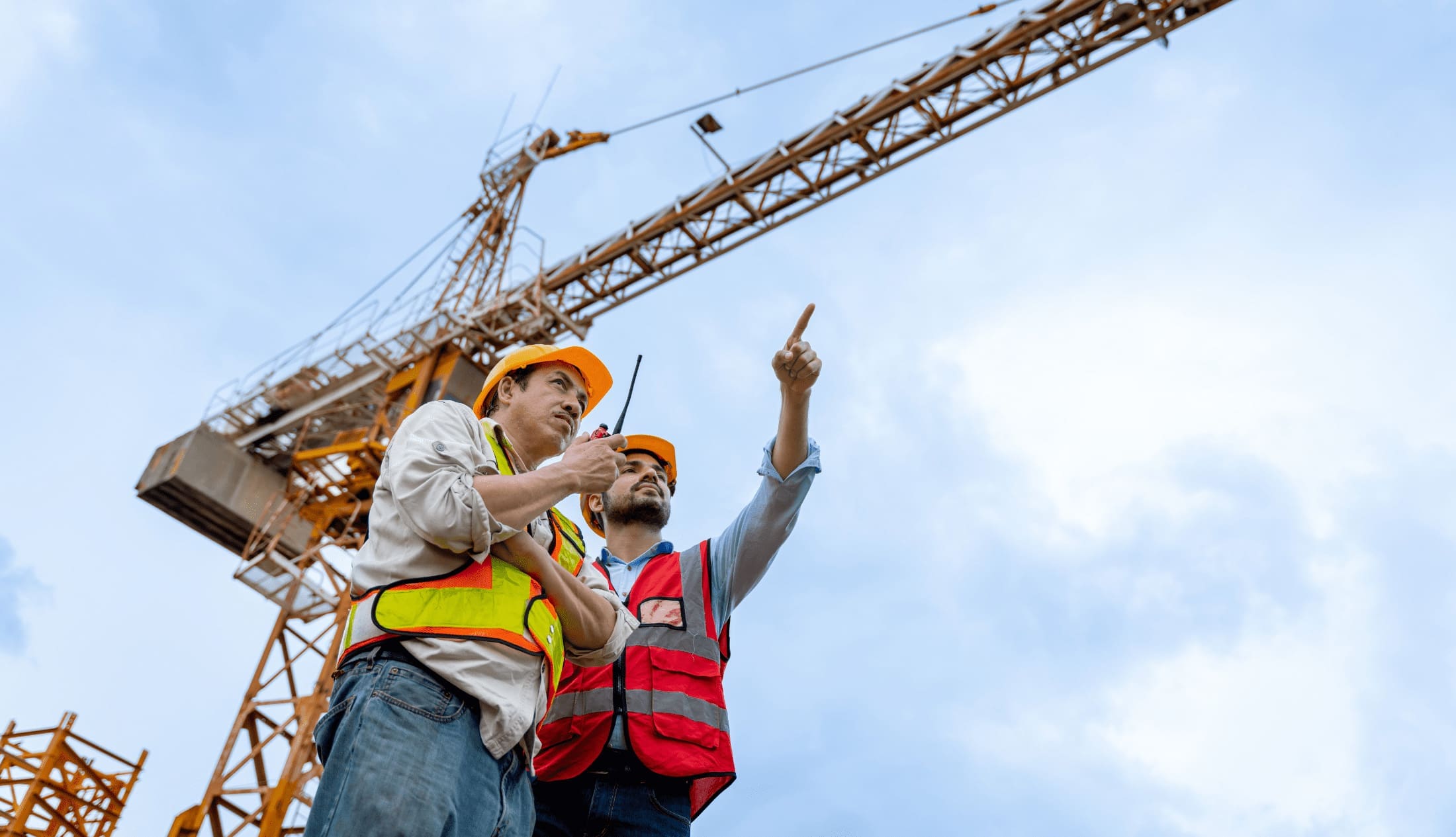
Top Crane Safety Protocols Every Construction Site Must Follow
Crane safety is critical to any construction site, especially in ground improvement projects where precision and heavy lifting are often required. At Densification, we’ve worked on countless construction sites and know the importance of strict crane safety protocols.
Safety First
Crane operations are at the heart of many construction projects, lifting heavy loads and maneuvering equipment with precision. However, without the proper safety protocols in place, cranes can pose significant risks to both workers and the worksite itself. In fact, crane accidents can lead to severe injuries, costly delays, and even fatalities.
According to the Occupational Safety and Health Administration (OSHA), crane-related accidents account for a large portion of fatal injuries in the construction industry. So, how do you ensure the utmost safety when operating cranes on your construction site?
In this blog, we’ll explore the most crucial crane safety protocols that every construction site must follow. These practices ensure compliance, but most importantly, safeguard lives and ensure the success of your project. Our expertise, including Professional Engineering (P.E.), Geotechnical Engineering (G.E.), and Professional Geologist (P.G.) credentials, ensures that we understand and can assist in implementing these protocols to the highest standards.
1. Regular Crane Inspections and Maintenance
One of the most critical aspects of crane safety is ensuring that the equipment is in optimal working condition. Cranes are complex machines that require regular inspections and maintenance to function safely and effectively. Failure to maintain a crane can lead to mechanical failure, which can cause serious accidents, property damage, or loss of life.
- Daily Inspections: Before any crane is used on the site, it’s essential that operators perform a thorough daily inspection. This includes checking the hydraulic systems, cables, pulleys, hooks, and other components for any signs of wear and tear. Small issues like frayed cables or malfunctioning control systems can quickly escalate into dangerous situations.
- Scheduled Maintenance: In addition to daily checks, cranes should undergo routine maintenance according to the manufacturer’s guidelines. This includes oiling moving parts, replacing worn-out components, and ensuring the entire machine is in good working condition. Regularly scheduled maintenance helps identify potential problems before they cause failures.
- Inspect Safety Devices: Modern cranes come with essential safety features like overload protection systems, anti-two block devices, and boom angle indicators. Overload protection prevents lifting beyond safe limits, anti-two block devices stop the hook or load from hitting the boom, and boom angle indicators help operators monitor the angle of the crane’s boom to ensure it’s within safe operating limits. Regularly inspecting these devices is crucial, as any malfunction could compromise crane stability and increase the risk of accidents.
At Densification, we ensure that all our equipment meets the highest standards of safety through stringent inspection and maintenance processes. This not only reduces risks but also enhances the efficiency of our projects.
2. Proper Training for Crane Operators
Operating a crane is a highly specialized skill that requires rigorous training and certification. Properly trained crane operators are less likely to make mistakes that can lead to accidents or injuries. This is especially important in ground improvement projects where precision and safety are paramount.
- Certified Operators: All crane operators must be certified by a recognized training program. Certification ensures that operators are knowledgeable about crane safety regulations, proper crane operation, and emergency procedures .Additionally, certified operators are trained to handle specific types of cranes, ensuring they understand the capabilities and limitations of each machine. Our fleet includes state-of-the-art Liebherr cranes, known for their advanced safety features and precise handling, providing operators with the best tools to perform their jobs safely and efficiently.
- Ongoing Training: Construction sites are constantly evolving, as are safety standards. It’s crucial for operators to receive ongoing training to stay up-to-date with the latest safety protocols, equipment updates, and regulatory changes. This includes training on how to safely operate cranes in different environmental conditions, such as high winds or confined spaces.
- Hands-on Experience: It’s not enough to understand crane operation in theory—operators must have hands-on experience with the specific equipment they will be using on-site. Each crane is different, and it’s vital that operators are comfortable with the controls, load limits, and any site-specific challenges they may encounter.
- Emphasize Communication: Effective communication between crane operators and ground personnel is essential to preventing accidents. Operators should be trained to use hand signals, radios, or other communication tools to ensure clear and concise direction during operations.
Training doesn’t stop once an operator is certified. At Densification, we provide ongoing training and support for our operators, ensuring they are fully equipped to manage the complexities of crane operations on any job site.
3. Implement Clear Load Management Guidelines
Overloading a crane or improperly securing a load can result in catastrophic accidents, including crane tipping, load dropping, or structural damage. To prevent these issues, it’s critical to have clear load management guidelines in place.
- Understand Load Capacity: Each crane has a specific load capacity that must not be exceeded. Operators must know the crane’s limits and ensure that every load falls within the safe operating range. Overloading a crane can lead to mechanical failure, instability, or the collapse of the crane.
- Proper Rigging Techniques: Securely rigging the load is just as important as understanding load capacity. Using the proper slings, chains, and hooks is essential for maintaining balance and stability. The load should be evenly distributed, and the rigging should be inspected to ensure it’s not damaged or worn out.
- Check Load Weight: Always verify the weight of the load before lifting. Even seemingly small miscalculations can lead to dangerous situations. Weighing loads accurately is key to preventing accidents.
- Communication Between Operators and Riggers: A clear system of communication between the crane operator and the rigging team is vital for ensuring that the load is lifted and moved safely. Miscommunication can result in load shifts or drops, endangering everyone on-site.
Densification implements strict load management protocols to ensure the safe operation of cranes on all projects. From understanding load capacities to ensuring proper rigging, we take every precaution to prevent accidents.
4. Create a Safe Work Zone Around the Crane
The area around the crane is just as important as the crane itself when it comes to safety. A clear and safe work zone helps prevent accidents involving workers or equipment.
- Establish a Clear Perimeter: One of the first steps in crane safety is establishing a safe perimeter around the crane’s operating zone. Barriers or signs should be used to clearly mark the area and keep unauthorized personnel out. This helps prevent accidental injuries from falling loads or moving crane parts.
- Maintain Safe Distances from Power Lines and Obstacles: Cranes should always be operated at a safe distance from power lines, buildings, and other structures. Power line contact is a leading cause of crane accidents. Proper planning and awareness of the surroundings help mitigate this risk.
- Spotters for Limited Visibility: Sometimes, crane operators may have limited visibility, especially when working in tight spaces. Using spotters to guide the operator ensures that they can safely navigate the crane and avoid obstacles.
Creating a safe work environment around the crane protects workers and equipment from accidents. At Densification, safety extends beyond crane operations to encompass the entire worksite.
5. Emergency Preparedness and Response Plans
Even with stringent safety measures in place, accidents can still happen. That’s why it’s crucial to have a comprehensive emergency response plan.
- Train All Workers on Emergency Procedures: Every worker on-site should be trained on what to do in the event of a crane-related emergency. This includes knowing where to go, how to alert others, and the steps to take to minimize harm.
- Accessible Emergency Equipment: First aid kits, fire extinguishers, and other emergency equipment should be readily accessible on-site. Workers should know exactly where to find these items in case of an emergency.
- Establish a Reporting System: If an accident occurs, there should be a clear system for reporting the incident and initiating an emergency response. This includes contacting emergency services and internal safety personnel.
- Conduct Regular Drills: Regular safety drills help ensure that everyone on-site is prepared in the event of an emergency. Drills should simulate different scenarios, from equipment failures to weather-related incidents.
At Densification, we prioritize emergency preparedness by regularly training our teams and conducting safety drills. Our goal is to minimize harm and ensure that our teams can respond quickly and effectively to any situation.
Conclusion
Crane safety is a non-negotiable aspect of any construction project. At Densification, we implement strict load management protocols to ensure the safe operation of cranes on all our projects. From understanding load capacities to ensuring proper rigging, our team takes every precaution to prevent accidents.
At Densification, we take crane safety seriously, and our experts, including P.E., G.E., and P.G., are here to help you implement the highest safety standards on your site. Want to learn more about how we can assist with your next project?Talk to Us – We’re Here To Help

